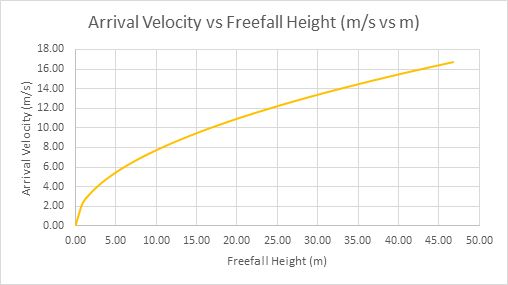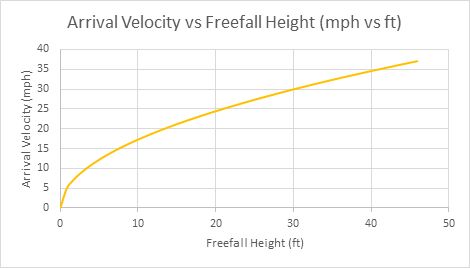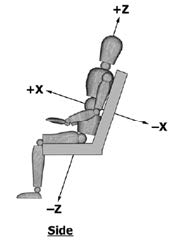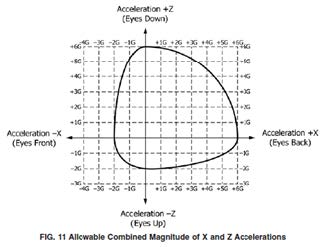The zipSTOP and zipSTOP IR Zip Line Brakes whare developed to create a comfortable, reliable primary brake that improves the rider experience and zip line throughput. Even though the zipSTOP is extremely reliable, we recognize that a zipSTOP is only one component of a complete and proper zip line brake system, which is a component within the overall zip line ride. Each component within the overall ride must be installed, tested, and inspected to meet industry regulations and component installation instructions.
Operations should have confidence in their braking components, such as the zipSTOP, but recognize the potential for unforeseen malfunctions of the primary brake including: third party equipment deficiencies and human error in installation, maintenance, use, etc. Due to this potential for error, an emergency arrest device (EAD) is required for any zip line installation with an arrival speed over 10kph (6mph) and when using a zipSTOP or zipSTOP IR Zip Line Brake. This requirement is based on ACCT and ASTM standards.
Speeds over 10kph (6mph) introduce dynamic effects on the human body when it comes time to stop a participant at the end of a zip line. It is important to understand the potential forces on the human body when transitioning from motion to a safe stop, and why a well-designed braking system and a suitable emergency brake or EAD are essential.
What is a Zip Line Brake System?
The Association for Challenge Course Technology (ACCT) and the American Society for Testing and Materials (ASTM) both have standards that apply to zip lines and the braking systems of zip lines. An EAD, also called an emergency brake, is mandated by ACCT standards in certain scenarios and ASTM requirements state that braking systems within a zip line must be fail-safe.
ACCT Definitions and Standards:
- Brake System: An arrangement of primary and emergency brakes that are designed to function together to arrest the motion of a person
- Emergency Brake: A brake located on a zip line that engages without any participant input upon failure of the primary brake in order to prevent serious injury or death
ACCT Standards state that a zip line brake system should be designed to address “The level of risk to the participant posed by the failure of the brake system or any of its components, including potential for pinching, binding, entanglement, etc.” The standards further state that “a qualified person” shall test the“brake system operational characteristics at the extremes of the design continuum for participant weight and arrival speed.”
ASTM Definitions and Standards
*Note: The below standards are relevant excerpts from ASTM F2291 and F2959
- Brake System: As it applies to aerial adventure courses, examples of braking systems include, but are not limited to: longitudinal friction brakes, disc or drum brakes, motor end brakes, either onboard or off-board of the patron-carrying vehicle or device. If the failure of the braking system results in an unsafe condition, then the braking system shall be fail-safe.
- Fail-Safe: Characteristic of an aerial adventure course, or component thereof, that is designed such that the normal and expected failure mode results in a
safe condition.
ASTM standards state that “the designer/engineer shall perform and document a ride analysis that illustrates how hazards to persons have been managed.” This report is to include hazard mitigation and a failure analysis in the form of "a Fault Tree Analysis, a Failure Mode and Effects Analysis (FMEA), or other accepted engineering practice."
Arrival Speed Comparisons
Many zip lines are designed and built to give participants an exciting and fun experience. This typically will result in zip line speeds that necessitate a well-designed primary brake and independent EAD. The zipSTOP and zipSTOP IR where created to bring participants to a smooth, gentle stop at the end of a zip line.
The product that allows the fastest arrival speed is the zipSTOP IR, designed to accommodate rider arrival speeds up to 60 kph (37 mph). Consider how the rider arrival speed of 60 kph (37 mph) compares to a human falling from certain heights. Acceleration due to gravity is a constant on earth and is . With the standard story height of 3m (10 ft), a person would reach speeds of 60 kph (16.7m/s or 37 mph) if they fell from 4.7 stories above ground, approximately 14.2m.
No one would consider jumping from a 5 story building without a proper and complete safety system in place. Similarly, zip line speeds require a proper and complete zip line brake system. The zipSTOP Zip Line Brake is only one component of a complete zip line brake system, and an EAD is another essential component that cannot be dismissed.
To further illustrate the serious need for both a primary brake and EAD, consider the below chart from a NASA study titled Human Tolerance to Impact Velocities. This chart shows the chances of survival when hitting a hard flat surface at different velocities. It shows that a participant falling with a vertical velocity of (no horizontal velocity) will be in the “zone of marginal survival,” meaning there is a significant chance of serious injury or death. This is the same speed as the above example of hitting a terminal structure at 60kph (37mph) or falling from 14.2m (47ft).
The “zone of certain survival” still carries significant potential for serious injury, so do not mistake that zone as an acceptable, safe, or desirable outcome. This chart reinforces the potential for serious injury or death without a proper and complete zip line brake system and reinforces the extreme importance of including an EAD on your zip line. If the primary brake fails, the EAD must independently provide the same safe braking.

We understand that most zip lines don’t have arrival speeds of 60kph (37mph). Even a typical arrival speed of approximately 40kph (25mph) can create a dangerous situation. Using the same comparison, an individual with a 40kph (11.2m/s or 25mph) arrival speed is equivalent to falling from 6m (20ft), or two stories. This lands right near the transition from certain to marginal survival. Again, most people would not be comfortable jumping from that height without safety measures in place.
The below charts show a comparison of arrival velocities to their equivalent free fall distances. These values can be used to assess zip lines arrival speeds and to get an understanding of how far a patron is “falling” when they arrive at a terminal platform. For example, Figure 3 shows that a rider traveling at 30mph has the same velocity as someone falling from 30 feet.


Why Guide Operated Emergency Brakes Are Not Recommended A typical zip line will have a primary brake designed to effectively bring any participant to a safe stop. Regardless of the type of primary brake, a suitable EAD is a requirement to protect against unforeseen failures of the primary brake. For example, if a participant were to pass-out on a zip line that used hand braking as a primary brake, what will stop them at the end of the zip line? Or, what if a rodent chewed through the redirection line on a zipSTOP, disconnecting it from the rest of the braking system? There must be a back-up system in place to bring all riders to a safe stop.
Many zip line operational procedures are to send a guide down, before any patrons, to arrive at the terminal platform so that they can receive their guests at the end of their ride. If that guide acts as the emergency brake for incoming participants, what is his/her emergency brake? We have heard of at least one guide who was indirectly struck by lightning and was incapacitated during descent so that hand braking would have been impossible.
It’s an anecdotal statement, but zip line guides are more likely to get seriously injured than participants. The primary reason is they ride zip lines more often than the average participant, and their exposure is greatly increased. It’s similar to the idea that the experienced back country skiers are the most likely to get caught in an avalanche; their exposure time in valanche terrain is so much greater. The more time you spend doing something risky, the higher the chances of something eventually happening. If something inhibited a primary brake from functioning as designed, it would statistically most likely happen to the person who rode the zip line the most. In order to protect guides, they should be afforded the same protections as the paying customer. Therefore we do not recommend guide activated emergency brakes as EADs.
Another reason guide activated EADs are not recommended is because of the increased potential for human error when attempting to activate the EAD, such as forgetting to reset a manual brake or not activating a brake in time. A prusik knot is a commonly used backup, but these require the guide to pull them to activate the knot. Think about the situation in which this backup would be required. In the case that the primary brake fails, a guide must activate the prusik knot in a matter of seconds.
Consider the situation in which a guide activated emergency arrest device would be necessary. The participant is traveling 60kph (37mph) when they arrive in the braking zone and the primary brake does not engage. The maximum braking distance of the zipSTOP IR is 20m (65ft), and the participant will travel that distance in 1.2 seconds. A guide is unlikely to activate the emergency brake before the rider hits the end of the line. According to the Harvard Database of Useful Biological Numbers, the upper average time for a single blink of the eye is 0.4 seconds. Meaning, the guide has the time equivalent of blinking 3 times to react and activate an emergency brake. That reaction
time would be extraordinary to say the least.
G-Loads Experienced During Braking
There are many factors that affect whether a rider experiences serious injury or death during terminal braking. These may include what the participant is stopped by, what orientation the rider is in, what kind of hardware is being used, and so on. One measurement that is helpful to understand the forces exerted on a rider during braking is g-load, or the perception of weight felt by deceleration. When standing on earth, a person feels 1 G vertically (their own body weight). High horizontal g-Loads can be felt when a driver slams on the brakes or low g-loads felt when a driver slowly brakes the vehicle. An object that decelerates (stops) in a short distance will experience greater g-loads than if slowed down over a long distance.
According to ASTM F2291, a participant is allowed to experience 6 times the force of gravity (6 G) if decelerating in the +X direction, as most zip lines do during braking (see Figure 4). However, it is well understood within the zip line industry that if a participant experienced 6 G while braking, they will swing upward and may hit the zip line cable. Any braking scenario with a zipSTOP or zipSTOP IR where a participant experiences greater than 2.5 G is not recommended due to comfort and rider swing up. This limit is what dictates the Braking Distance Minimum (BD MIN) line on the Stop Distance Charts in the zipSTOP Zip Line Brake Installation, Operation & Maintenance Manual.


Taking into consideration the maximum g-loads as stated by ASTM (6 G) and our (2.5 G), let’s take a theoretical look at how different braking methods create g-loads. Remember, a key to understanding g-loads is braking distance. An object that decelerates (stops) in a short distance will experience greater g-loads than if slowed down over a long distance.
As an example, let’s look at a braking situation at the maximum speed allowed by the zipSTOP IR to see how many Gs a rider may experience. A squirrel has chewed through the redirection line and the primary brake fails to engage. The guide would have 1.2 seconds to engage the prusik knot back-up. A rough estimate is that a prusik knot emergency brake, if effective, would stop the rider in 0.5m (1.6ft). The rider will experience 28.3 G, nearly 5x greater than the ASTM maximum. Even if the stopping distance was a full meter (3.3ft), the rider would experience 14 G. Again, we understand that most zip lines don’t have arrival speeds of 60kph (37mph). Even a more typical arrival speed of approximately 40kph (25mph) can create a dangerous situation. Using the same comparison, an individual with a 40kph (25mph) arrival speed will experience 13 G if stopped within 0.5m (1.6ft). Now imagine what would happen if an improper EAD, such as a cable clamp that would stop the rider in an even shorter distance, were used.
Please note the calculation method shown is a simplified theoretical calculation that provides best case g-load scenarios. The calculations assume that the participant experiences constant deceleration over the entire emergency braking distance. For example, the calculation shows a participant traveling 38kph (24mph) will experience 6 G if provided a braking distance of 1m (3.3ft). This is NOT the case for all emergency braking situations.
In reality, a participant will experience a minimum and maximum g-load. A spring pack will provide increasing deceleration as the springs are compressed, resulting in increased deceleration and higher g-loads than calculated in the example. A participant is also not rigidly connected to a trolley which will allow the rider to swing and may help increase the braking distance, in turn lowering g-loads. Theoretical data can provide a baseline, however there are a multitude of factors that affect emergency braking scenarios. Therefore real world testing with purpose specific test equipment completed by a competent designer or engineer is the preferred option for verifying an EAD. Such testing is outlined by ASTM F2137 Standard Practice for Measuring the Dynamic Characteristics of Amusement Rides and Devices.
How to Test a Primary Brake and EAD
The ACCT standards states that an emergency brake is: A brake located on a zip line that engages without any participant input upon failure of the primary brake in order to prevent serious injury or death. The standards do not specify certain types of devices or brands, and we does not endorse particular products. Every zip line installation is unique and different, and it is the responsibility of the installers, operators, and builders to ensure that the zipSTOP Zip Line Brake is installed and operated per ACCT and/or ASTM standards and the zipSTOP Operators Manual with an adequate EAD.
According to ACCT there are test requirements for a zip line brake system:
A qualified person shall design the methods, oversee the performance and assess the results of operational tests. All tests shall provide proof of the following:
- Brake system operational characteristics at the extreme of the design continuum for participant weight and arrival speed
- Confirmation that the brake system performs reliably and as designed
Since an emergency brake is part of a complete brake system, as defined by ACCT, it must be tested per the ACCT standards if: Upon failure of the primary brake, both of the following may occur:
- The participant arrives at the zip line landing area at a speed in excess of 6 mph (10 kph)
- The participant experiences unintended and/or harmful contact with terrain, objects or people in the zip line landing area
According to ASTM F1193 Performance Testing must be completed:
- Performance Testing – This should consist of a series of specified tests that can be used to determine that the newly erected ride or device conforms to the original design criteria
Since the original design criteria of the brake system is that it is fail-safe, it must be tested to prove that the brake system is indeed fail-safe. We Technologies recommend testing the efficacy of a proposed EAD by disconnecting the primary brake and sending a range of test weights (unmanned) down the zip line. Observe the arrival speed and the weights impacting the proposed EAD. Could serious injury or death occur, does it appear to result in a safe condition? If serious injury or death could occur or it does not result in a safe condition, it is not
an emergency arrest device.
It’s not stated directly in the ASTM or ACCT standards, but it should be noted that certain conditions can greatly affect arrival speed of a participant. Cold temperatures, wet conditions, and strong winds can all greatly increase the rider arrival speeds and should be considered during testing and accounted for by the primary brake and EAD
Conclusion
A primary brake and an EAD are critical for creating a complete zip line brake system and for mitigating risk. The inclusion of a properly designed, installed, and tested primary brake and EAD on your zip line could mean the difference between life and death in worst case scenarios. This is in part why we require the use of EADs in all zip line installations utilizing the zipSTOP and zipSTOP IR Zip Line Brakes. This requirement is based on ACCT and ASTM standards.
These standards and our EAD requirements are designed to benefit the zip line industry as a whole. Reduced risk, increased reliability, and fewer incidents of injury will build confidence in the industry and improve the health of the industry as zip lining continues to grow in popularity. We recommend ensuring your primary brake and EAD are aptly designed for the worst case scenario and conducting physical tests and regular inspections to ensure the efficacy of all braking systems.
Additional expert Information regarding Zipline technology
Interested to read more about Zipline technology and expert opinions?
- The Power of Zip Line Simulation Software
- Bi-Directional Zip Line Technology
- Zip Line Design: Components for a Complete System
- How a Zipline Feasibility Study Guarantees Success
- MAG Brake Trolley, the Magnetic Self-braking Zipline pulley
- Professional Zipline Engineering & Design services
- How to Launch a Zip Line Company
- The Science of Zipline Design and Engineering
- Zipline Mistakes You Don’t Know You’re Making
- Key elements: Zipline Design and Engineering
- Thinking of investing and operating a Zipline?
- Zipline Emergency Arrest Devices (EADs)
- The ZipCoaster - Fly through the air, dipping and twisting
- Pros and Cons of Different Zip Line Brakes
- Expert Tips for Zip Line Brake Installations
- Thinking of investing and operating a Zipline?
- Ingenious inventions. The curvy zip line












